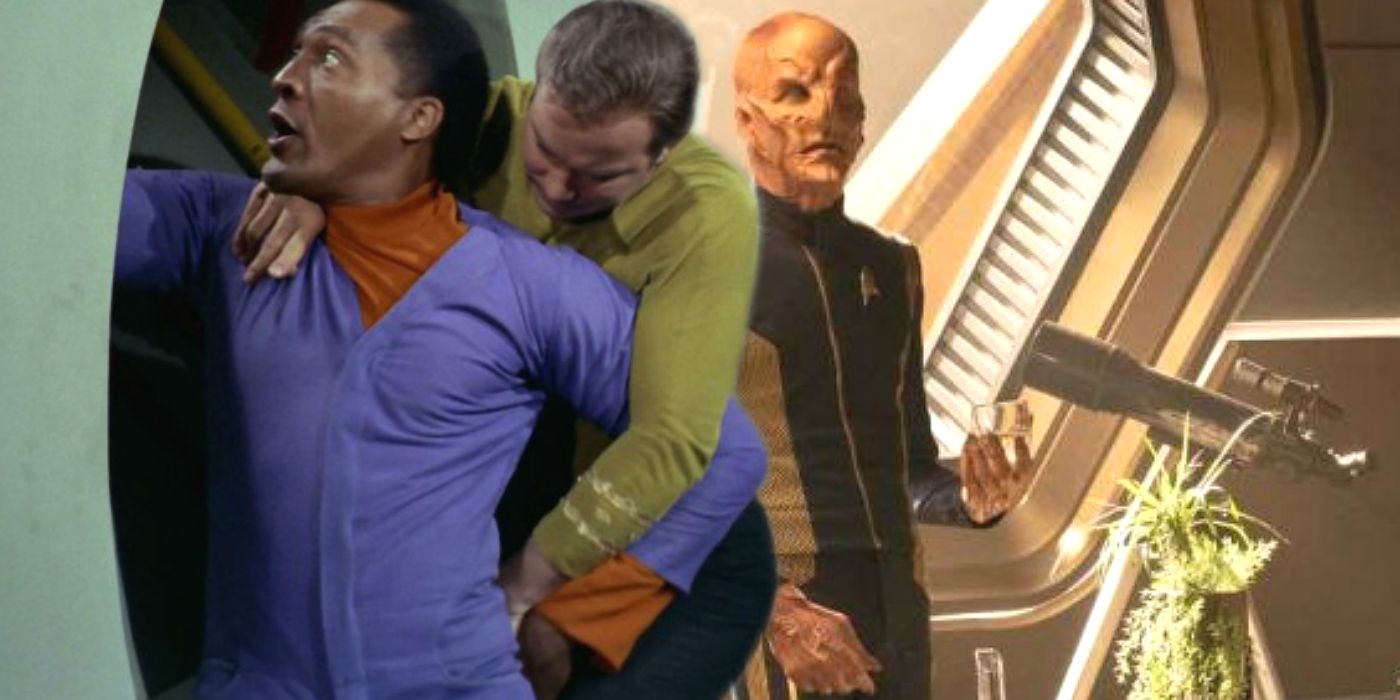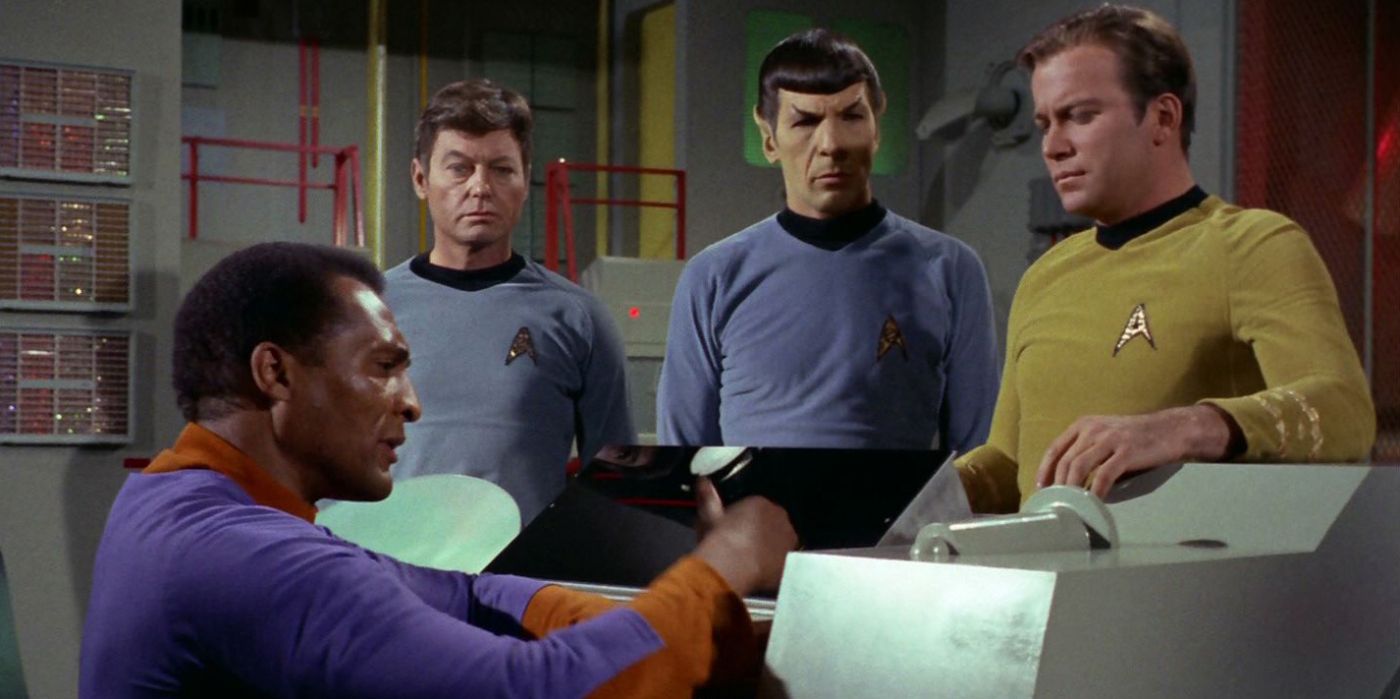Star Trek: Discovery's new and evolving computer has its origins rooted in Star Trek: The Original Series' Daystrom Institute. In "Forget Me Not", the fourth episode of Star Trek: Discovery season 3, Captain Saru (Doug Jones) was consulting the U.S.S. Discovery's computer for advice when he was surprised by the A.I. suddenly changing its voice and personality. This was the beginning of how the Discovery's mechanized brain becomes Zora (Annabelle Wallis), who Trekkers met in the 2018 Short Trek "Calypso".
"Calypso" is set a thousand years in the future from Star Trek: Discovery season 3, which already jumped 930 years ahead from the 23rd-century starting point of seasons 1 and 2. In this increasingly impactful and foretelling Short Trek, the derelict U.S.S. Discovery had long been abandoned by its crew when Zora saves the life of a soldier named Craft (Aldis Hodge), who was lost in space. They bond and even form a romance, but Craft realizes he has to return home to his actual wife and child. Zora lets him go and continues her solitary existence adrift in space. In Star Trek: Discovery season 3, Captain Saru correctly theorized that the change to the ship's computer (which hasn't claimed the identity of Zora yet) was due to it merging with the sphere data, which is 100,000 years of ancient knowledge retrieved and protected by the crew of the Discovery in season 2.
However, there's an even more fascinating tidbit about Zora that wasn't aired in an episode (yet). In the screenplay for Star Trek: Discovery season 2, "Such Sweet Sorrow", which the cast read aloud during the 2020 San Diego Comic-Con, there's a deleted line that the "Zora program" was developed by the Daystrom Institute as a substitute for Control. This is significant since Control was Starfleet's threat assessment A.I., which turned rogue and murderous in Star Trek: Discovery season 2. Control, which replaced Captain Leland (Alan van Sprang) of Section 31, needed to merge with the sphere data so it could attain full sentience and enact its plan to wipe out all organic life in the galaxy. Making sure Control never acquires the sphere data is the reason why Commander Michael Burnham (Sonequa Martin-Green) and the crew of the U.S.S. Discovery permanently traveled to the 32nd century.
Meanwhile, the retcon that Zora was developed by the Daystrom Institute is fascinating and it ties into the TOS episode "The Ultimate Computer", which takes place a decade after the Discovery left the timeline. "The Ultimate Computer" introduced Dr. Richard Daystrom (William Marshall), who was the greatest computer genius of his day; he invented the duotronic computers used aboard Starfleet ships. But Daystrom was also emotionally unstable and he programmed his next breakthrough, the multitronic artificial intelligence he dubbed M-5, with his own personality engrams. Daystrom suffered a nervous breakdown after the M-5's field test resulted in it attacking Starfleet ships and killing their crews. Captain James T. Kirk (William Shatner) successfully talked the M-5 into committing suicide while Daystrom himself was institutionalized.
Star Trek: Discovery's revelation about Zora means that the Daystrom Institute already built a massively flawed A.I. in Control but was trying to correct its error with Zora in 2258. However, Dr. Daystrom, eager to prove his genius to his doubters, instead moved forward with his attempt at a multitronic A.I., but M-5 also failed with tragic results in 2268. As for when Zora was actually installed aboard the U.S.S. Discovery, this likely occurred off-screen during the Star Trek: Discovery season 1 finale, when the starship returned to Earth so Burnham and the crew could receive accolades for their role in ending the Klingon War of 2256-2257. As a science vessel, the Discovery is supposed to carry Starfleet's most advanced technology onboard, which would include the experimental Zora program.
Given Daystrom's poor track record with artificial intelligence in the 23rd century, it's quite likely that if the Discovery had activated the Zora program, it would also have turned murderous, but this was a fate Star Trek: Discovery avoided by jumping to the distant future. The difference makers were the sphere data combined with the heroic altruism of the crew of the U.S.S. Discovery. What the sphere data learned about the starship's crew when it merged with the Discovery's computer and began to achieve sentience is leading it to develop the kind. helpful, and protective personality that will fully manifest as Zora, which will likely happen at some point during Star Trek: Discovery season 3.
Star Trek: Discovery streams Thursdays on CBS All-Access and Fridays internationally on Netflix.


